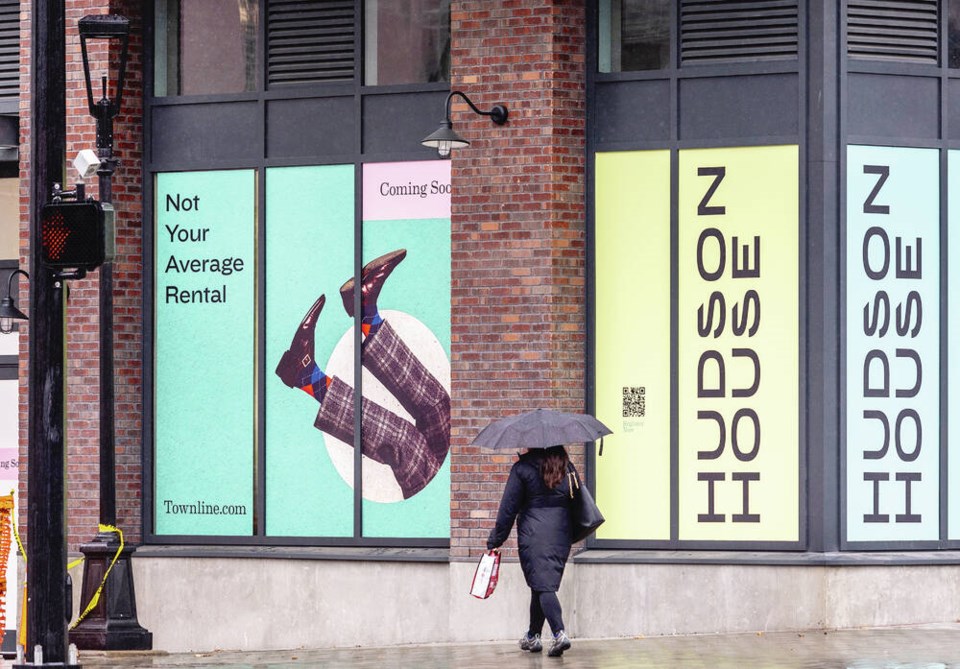Rising interest rates and construction and land costs that make it harder for builders to start projects could make Greater Victoria’s rental housing market — already tight with a one per cent vacancy rate — even tighter.
That’s despite the fact that nearly 5,000 rental housing units are under construction and another 5,000 are in the planning stage in the region, where rental demand and employment rates remain high.
“We are facing a crunch and we are already seeing a supply issue ahead of us,” said Grant Evans, vice-president with Colliers International Victoria. “The pressure is going to continue and I don’t see it being alleviated any time soon, because the fundamentals haven’t changed and we’ve been talking about the same pressures for 20 years.”
The main pressure is demand, which has increased as those who are able to work remotely flock from larger centres to Victoria, which is seen as a desirable place to live.
To meet the demand, Victoria’s residential construction industry has been working flat out to build new homes, last year breaking a 45-year record with 4,809 new homes started. The previous record was 4,439 set in 1976.
But builders note the region is still digging itself out of a housing deficit and will need to maintain that kind of pace to keep up with a population that grew by eight per cent to 397,237 over the past five years.
Maintaining that pace will be difficult, however, because interest rates, construction costs and land costs have all increased significantly, Evans said.
“We had a window of opportunity that developers took advantage of to create rental product that we haven’t seen before, but that window is quickly closing with rising interest rates, construction costs and rental rates hitting a high, with not much more room to increase,” he said.
“We’re aware of projects that have been shelved due to the economics that no longer make sense today, but did make sense six months ago.”
Pershing Sun, market analyst with the Canada Mortgage and Housing Corporation, said the completion rate of purpose-built rental buildings is lower than last year in the region, as are the number of housing starts in that building category.
She said in a higher interest-rate environment, it’s harder for builders to start new projects, which will put more pressure on the supply side.
“I wouldn’t be surprised to see a cooling down of the construction sector if interest rates keep growing,” she said.
At the same time, Victoria’s unemployment rate remains low and labour is in high demand, which translates into more demand for housing.
High interest rates could also force would-be homebuyers to join the rental market because they can’t carry a mortgage, she said.
That added competition does not bode well for those looking at getting into the rental market.
According to Colliers’ recent multi-family report, the vacancy rate for the entire region is just below one per cent, and the average rental rate has increased significantly in the last year to the point that Victoria is now the fifth most expensive rental market in Canada.
The report notes the average advertised rent for a one-bedroom unit was $2,098 in August, a 17 per cent increase from the same time last year, while rent for a two-bedroom has increased 34.8 per cent to $2,871 and a three-bedroom unit is now $2,485, an increase of 27.4 per cent.
David Logan, managing broker at Duttons Real Estate, which offers higher-end property management services, said the demand remains high, with clients from places like Vancouver and Seattle moving to Victoria and renting before they buy, while other clients need temporary housing while they do major renovations.
“There is a little pause [in the market] right now because you’re sliding into Christmas and there’s rising interest rates, so people may be putting their renovation plans on hold,” he said. “But I’m originally from Vancouver and the demand and the number of people that want to come here, well it’s not just retirees anymore. It’s people in their thirties and forties.”
With many people now able to work from anywhere as long as there’s decent internet access, Logan isn’t anticipating any drop in the steady stream of demand.
Dennie Linkert, owner of Complete Residential Property Management, which specializes in strata properties but also acts as landlord for 300 rental units across the spectrum, said rising interest rates and inflation are motivating tenants to stay put longer, knowing they face higher rents if they move.
Meanwhile, landlords have little choice but to raise rents to cover increased borrowing costs and the increased cost of repairs and other maintenance services, Linkert said.
“It’s been terrible for the landlords, and I think it’s causing some of them to just sell their units — they’re getting out of the market because the costs are too high,” she said. “There’s so many issues. It’s not good on either side.”



